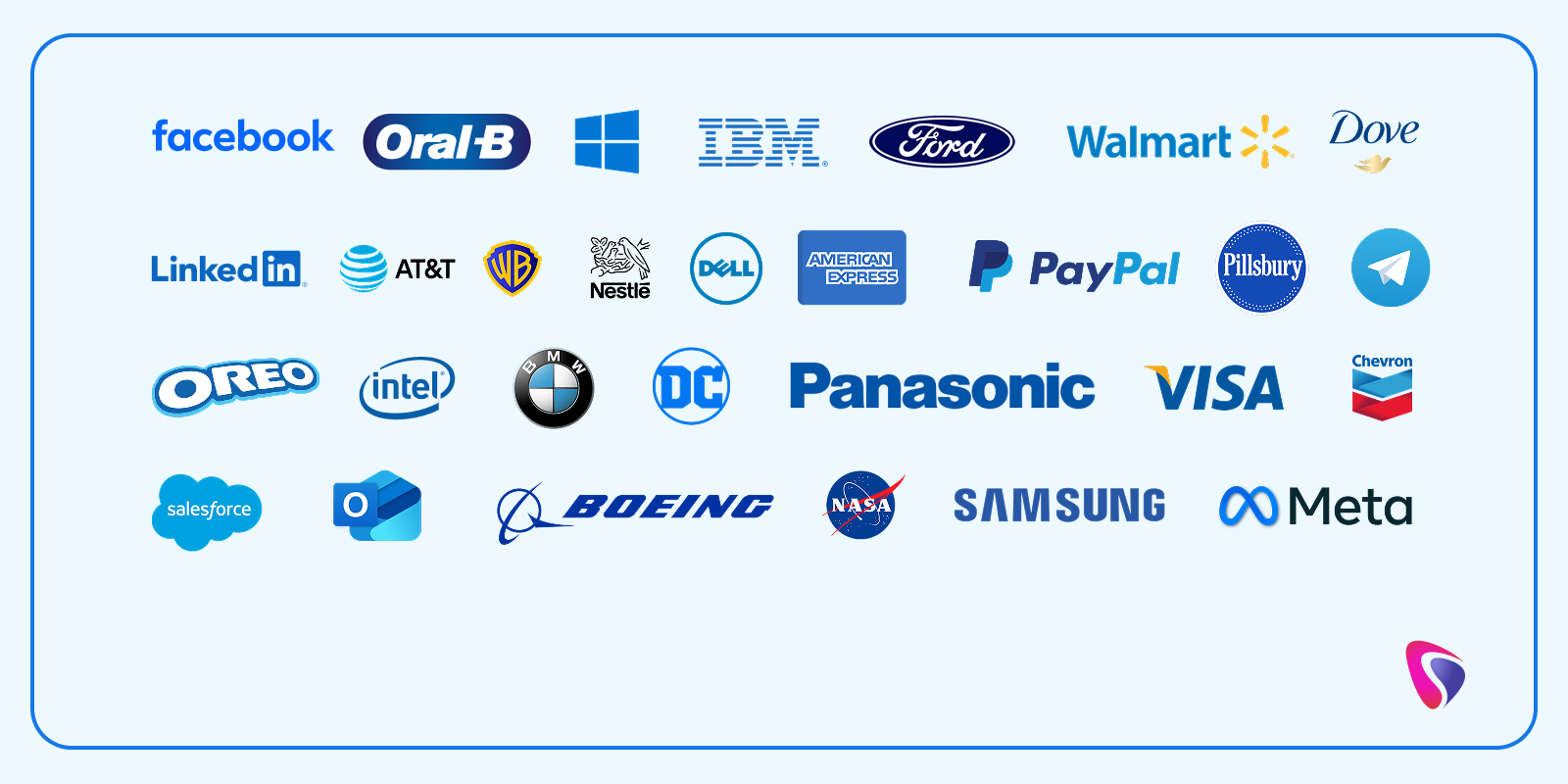
Change is the only constant. We may have heard this before, but it's not just a proverb. It holds great relevance in the digital product development landscape. Digital products with unique offerings and features initially gain immense popularity, but if they fail to evolve or innovate, their success won’t last long. As per reports, investing in digital product development can boost efficiency by 19%, cut production costs by 13% and time to market by 17%.
Without a clear plan of action, scaling a product can turn into a nightmare. Merely rushing to scale your product because your competitor is doing it can prove to be disastrous. Every company is different, plus you don’t know why the competitor is scaling the product. It could be to target a new audience, enter a new market, or meet business demands without exceeding the budget.
As a company, you need to know when, how, and why to scale. Amazon scaled from an online bookstore to become a global e-commerce giant. Similarly, Netflix was a small-time DVD rental service provider that entered the online streaming scene in 2007, and the rest is history. If you think their success was easy and happened overnight, you are mistaken. This blog will focus on why, when, and how to scale digital products. Let’s get started.
8 Reasons to Scale Your Digital Products
Scaling digital products offers numerous benefits for companies. Below are some of the top reasons for companies to scale their digital products.
1. Increased Business Demands
As a business grows, it attracts more users, uploads more content, and handles higher traffic on websites, apps, and other channels. To ensure smooth and error-free operations, scaling becomes necessary under such circumstances.
2. Revenue Growth
Every company wants more revenue. More than greed, it's about staying prepared for that bad/lull phase. Increased revenue acts as a cushion, allowing companies to stay prepared for unforeseen situations and to focus on other initiatives such as R&D and innovation.
3. Competitive Advantage
Technology evolves, and so do trends and user expectations. Scaling is essential to keep up with these changing times and stay relevant. In most cases, scaling products creates innovative products with better features and enhanced performance.
4. User Experience
Often, scaling is more of a compulsion than a choice. Users stop using slow and unresponsive apps because they ruin the experience. If the company really cares about its customers, it will scale the solutions for improved performance, personalization, and navigation.
5. Operational Efficiency
With scaling, companies can automate repetitive tasks and even entire processes. Deploying, maintaining, and scaling resources becomes effortless, plus companies only pay for what they use. Over time, this approach reduces costs and increases operational efficiency.
6. Data-Driven Insights
Scaling apps and solutions brings more traffic and an increased number of users. More users bring huge volumes of data, including diverse geographical regions, devices, platforms, and more. Customers can use these insights to understand their customers and improve their offerings.
7. Security and Compliance
Cloud-native security, monitoring, and location-specific compliance measures become automatically embedded as companies scale solutions. This ensures active protection against threats while reducing the possibility of penalties.
8. Future-Proofing
Scaling is more than just acquiring new customers and increasing revenue. It provides companies with a flexible architecture to introduce new features, control costs, handle massive data volumes, and modify their offerings to suit different markets.
When is the right time to scale a digital product?
There are signs indicating that companies should scale a product. Companies must notice these signals before it is too late. One of the most important is that the product is not relevant in the current times, and neither is it able to meet increased user/business demands. Most customers won’t say it openly, but they will simply quit using the solution and switch to your competitors.
Don’t leave until all is lost. Analytics deliver potent insights related to features that the product lacks, areas that require greater focus, and more. Some key metrics that business owners must focus on include user and revenue growth, engagement, demand, and how it measures up against competitor products. Below are some key signs that tell companies when to scale their digital products.
1. Market Demand
What is the demand for the product in the market? This is one of the biggest telltale signs about how customers feel about the product. Loyal customers may continue to use the app, but it will attract new users only if they like the features, design, and overall experience. Also, do existing users refer the product to others in their social circle?
With referrals and word of mouth, the company does not have to spend millions of dollars on marketing and promotions. If adding new users requires the company to pump in thousands of dollars in marketing, it's a sign that the app needs scaling. Conducting market research will also shed light on whether there is a growing market for the app.
2. Product-Market Fit
Every company must know what customers feel about its product. Do the product features merely help them perform certain actions, or do they make them happy? Innovative features delight customers and prevent them from uninstalling the app or choosing rival apps. Suppose a customer stops using the app. Then, it's a sign that they are unhappy with the product and that it needs improvement. A high NPS rate means customers recommend the product to others.
Another crucial sign to note is whether customers are ready to pay for in-app purchases and premium features. If customers are not ready to pay extra for top-tier features, it is time for the business to scale the product.
3. Financial Health
Unit economics matter when determining if the app needs scaling. Analyze the costs incurred to acquire a customer and the profits you get from them. Pay attention to how much time it takes to recover costs spent on each customer. Promotions are great, but don’t depend on them to deliver consistent revenue and growth. Pump profits back into the business to fuel business growth.
4. Operational Readiness
Can the business function smoothly without the CEO, founder, or operations manager? Dependence on a single person is not good. The company’s infrastructure, including the software, cloud services, supply chain, and customer support, should be enough to handle increased users or business demands without crashing. Expand the team if necessary.
5. Competitive Positioning
When you have a unique product that stands out in the market, it is a good time to scale your product. A unique product means competitors cannot copy your product due to complexity or patient-related issues. During the initial stages of success, it is crucial to scale at the right time because it gives less time for rivals to copy the design and features.
6. Early Scaling Tests
Scaling blindly is not the right strategy. The best strategy is to scale gradually, starting with a new feature in another city. If the move pays off in one new location, it is time to repeat it elsewhere. This will also give them an idea of the ROI on advertising spend, preventing overspending or making ill-informed decisions.
Who Should Think About Scaling Digital Products?
Many business owners think that scaling is only for large enterprises, but that's a misconception. Depending on the company’s market position, goals, product type, and other factors, scaling can immensely benefit a business. Below are companies that should consider scaling their digital products.
1. Startups With the Right Product
When a startup starts to see increased user adoption, popularity, word of mouth, and other positive signs, it should consider scaling the product. Moreover, it's also a good time to test the digital product in different markets or newer user segments.
2. SMBs Going Digital
Small and medium-sized businesses are always anxious about scaling due to budget constraints and the fear of failure. That said, if these businesses (apps, online stores, or platforms) witness steady growth or an increase in revenue, they should consider scaling.
3. Expanding Beyond Core Business
Suppose a bank performs traditional banking operations. In a few years, the bank wants to launch a new robo-advisor on an AI-powered investment app. Such a move requires the company to scale. Competing with industry bigshots and agile startups requires product scaling.
4. Digital Creators or Sole Entrepreneurs
Digital creators and entrepreneurs who are running the show without any support should consider product scaling. However, these people must first focus on creating a product that solves a problem, plus it should gain traction and popularity. After achieving a reasonable degree of success, these individuals should think about scaling by adding premium features, expanding their offerings, or targeting a new audience.
5. Non-Profit Companies
Non-profit companies and organizations working for social causes often use apps to conduct their operations. If the solution/app/digital product becomes popular, the companies can think of scaling it so that it reaches more people and benefits them.
6. Ambitious Founders
Suppose a company launches a new product that is loved by users. These users recommend the product to others in their social circle. Over time, the app’s popularity spreads online and offline, encouraging more users to download and use it. But there’s a problem. A cunning, opportunist rival company can notice the product’s potential and copy the idea. In such cases, the company with the original idea must consider scaling early to cash in on the early momentum.
How should companies scale their digital products?
Scaling a digital product is simple if companies follow a structured and individualized approach, but unfortunately, many get it wrong. They rush into scaling without planning for future needs, plus they ignore aspects like user experience, spending excessively or too little, and not adapting to local markets. Other mistakes include over-investing in cloud services, automation, and paid marketing. Below is the tried and tested path to scaling a digital product.
1. Evaluating Current Infrastructure and Hurdles
Moreover, planning for the future is important. The current infrastructure may be good for now, but it may not be good enough to handle future scaling needs. Business owners should conduct a detailed evaluation of the infrastructure’s performance, data handling capabilities, resource usage, individual components, and their dependence on each other before taking the first step.
Additionally, the tech stack and infrastructure must respond quickly to meet dynamic business requirements, facilitate multitasking, and allow numerous users to work simultaneously on the same project. Mapping business processes and workflows is of utmost importance as it will help companies identify the strengths, weaknesses, and hurdles. With a crystal-clear understanding of resource usage needs, load handling capacity, and other infrastructure needs, they can conclude whether the current infrastructure supports scaling.
Some of the common tools to achieve the above goals are as follows.
- Monitoring tools - Monitoring tools like Splunk and Dynatrace provide robust, real-time insights into system performance. With these insights, companies can identify issues and take the necessary steps to fix them.
- Profiling Tools - Using profiling tools such as VisualVM and Data Dog to find the reasons hampering performance, memory, and code-related issues, along with database queries.
- Load Testing - Tools like LoadRunner or Locust mimic high-traffic conditions to help companies identify factors that negatively impact performance.
2. Code and Performance Optimization
Clean code is integral to excellent app performance. The code must run faster while using minimal resources, but this requires additional work. First, the company must identify the reason for the performance lag by examining all aspects minutely, right from app design and algorithms to how the app manages data.
After uncovering the reasons for sluggish performance, the company must take measures to stop repetitive calculations and disk reads/writes to storage, and minimize memory usage. Often, it would also make sense for companies to split up complex tasks into smaller parts to boost performance.
Some precious hacks for performance enhancements include choosing the right data types, storing common results to minimize repetitive computations, and optimizing resource use and planning workflows to ensure zero hiccups. Using some of the tools below may help to optimize code and system performance.
- Profilers like Valgrind and Jprofiler to identify reasons for reduced performance, including bugs in the code, graphics, or complex calculations.
- Static code analyzers can find problems in the code before they hamper performance later.
- Load testing tools to analyze the system’s ability to handle heavy loads or an increased number of users.
3. Horizontal vs. Vertical Scaling
There are two ways companies can scale their app to handle more users and boost performance. Horizontal and vertical scaling are the two techniques that companies can use. Let’s discuss both these types in brief.
Horizontal Scaling
With this scaling technique, companies add more infrastructure, especially servers, to distribute the workload. The first and foremost condition for scaling is to ensure a stateless system where crucial data does not lie on a single server. Instead, the data lies on multiple servers, and the traffic is distributed, allowing them to handle multiple requests without compromising performance.
Sometimes, apps may fail to work on other systems, servers, or platforms due to differences in their environments. Containerization platforms such as Docker can solve this problem by assembling everything required to run the app, including libraries, settings, and dependencies, and moving them into a box (container). So, no matter where the company runs the container, the app will function smoothly and deliver excellent performance.
Now there is another problem because there are multiple boxes (containers) that must be run on several systems. Handling this task manually requires a great deal of effort, plus it can be error-prone. Kubernetes is a solution to this problem as it determines the location to run each container, how many app versions to run, actions to be taken in case of app crashes, and traffic spikes.
If the company requires more resources, it can use computing platforms that scale resources to handle higher traffic or users while ensuring seamless speed and performance.
Vertical Scaling
Horizontal scaling is not the only solution for all problems. When horizontal scaling does not work, vertical scaling rushes to the rescue. In simple terms, vertical scaling is bolstering a server’s capabilities by increasing its power. Here, increased power could refer to more processing or computing power, or storage. Revamping the entire system or investing in new infrastructure may not be cost-effective or practical for all companies. Vertical scaling is more economical for companies without making major infrastructure investments/changes and for those who can manage business workload on a single server.
While horizontal scaling distributes workload across multiple systems, it can be hard to manage. Compared to horizontal scaling, vertical scaling is more manageable, but companies cannot upgrade a server beyond a certain limit. In conclusion, horizontal and vertical scaling have their share of pros and cons. They must be used at the right time and place while considering the budget, system complexity, scalability, and other business needs.
4. Use Cloud Services
Cloud platforms are great, but companies know which one to use and how to deploy them to achieve the best results. The market is full of cloud services such as IaaS, PaaS, and SaaS to complicate matters, there are different deployment models such as public, private, hybrid, and other types of clouds. Depending on the degree of control, privacy, and flexibility that a company wants, it can select the appropriate platform and deployment option.
However, cloud services and deployment methods should not be the only consideration. Choose your cloud provider carefully. Ask them the following questions.
- What is their track record?
- What security systems do they use?
- Do they follow the necessary data privacy and other regulations?
- Can the provider scale your resources on demand?
Companies must consider the pros and cons and the provider’s track record before choosing cloud services.
5. Implement Caching Mechanisms
Caching is like storing a secret key to retrieve information used before, saving the time required to fetch or compute. Thanks to caching, the app’s components or libraries fetch the data quickly during complex or time-intensive processes. Depending on the data type, size, access requirements, and how it changes, companies must choose the right caching mechanisms. Below are some of the most common caching mechanisms.
- In-Memory Caching - Data lies in RAM, allowing companies to get to it quickly.
- Content Delivery Networks (CDNs) - Proxy servers in different parts of the world (often closer to users) reduce website loading time and also for downloads.
- Database Query Caching - Eliminates the need to run database queries repeatedly, as the data is stored in the database.
- Hybrid Caching - Combines in-memory and distributed caching, enabling users to access data faster while handling large volumes of data and users.
6. Design for Scalability
When designing for scalability, companies must determine the workload that their systems can handle currently. Then, they must design their infrastructure and set things up while focusing mainly on modularity. This means that the entire setup must be such that each component can be split up into smaller parts to simplify horizontal or vertical scaling. Then, companies must focus on managing data using innovative techniques such as sharding, caching, indexing, and more. Below is a brief explanation of the same.
- Caching - Storing frequently used data in a specific location to facilitate quick and convenient access.
- Sharding - Breaking up large databases into smaller parts called shards to increase the system’s efficiency in handling more requests. This ensures speed and efficiency.
- Load Balancing - Spreading incoming requests across multiple servers to prevent servers from getting jammed/overworked with excessive requests.
- Indexing - Skims through databases to help users find the exact page/location when users type queries.
- Compression - Using this feature, companies can compress data before sharing or transferring it between systems to reduce wait times.
7. Integration and Deployment
Continuous integration and deployment are some powerful hacks to simplify and streamline software development while keeping errors to a minimum. Unlike traditional development, where developers check for bugs and flaws upon project completion and prepare it for release, CI/CD developers take a different route. Every time someone makes even a minor change to the code, the system analyzes the errors, checks for errors, and makes it ready for others to use it. With this approach, it becomes possible to add new features and fix errors.
However, adopting the above approach is possible only if the company preserves the code in a version control system like Git. This move will ensure efficient and timely code tracking. Developers can use tools such as Jenkins or GitHub actions. These tools check the code to ensure it ticks off all the boxes, followed by testing and finally making it deployment-ready. Once the app is ready for deployment, Kubernetes enters the scene to ensure that the app works smoothly on any device and scales without posing any hurdles.
Below are some top tricks and techniques to improve integration and deployment.
- Infrastructure as Code (IaC) - Say goodbye to manual server and infrastructure setup. Use Terraform.
- Continuous Testing - Use Selenium or JUnit to enable automatic app testing and proactive highlighting of issues.
- Canary Releases - Use Spinnaker or Istio to make the app available to limited users at first. If it's not up to the mark, make tweaks if required, and release it to the general public.
8. Monitor and Analyze Performance
Observability is key because it provides deep insights into the system. These insights include overall health and issues that negatively affect its performance. For proactive monitoring and problem fixing, it is advisable for companies to gather data from different sources, such as logs and metrics, and store it in a single repository. Next, companies can analyze the gathered data using visualization dashboards and analytics tools to make informed decisions.
Analytics tools convert massive volumes of data and present them in simple, understandable formats, making it easy for stakeholders to identify roadblocks, opportunities, threats, and chances of potential system failures. In short, observability is a proactive approach that identifies issues before they turn into major problems and derail operations. Below are some observability techniques that companies use when scaling.
- Distributed Tracing - Using tools like Zipkin, it is possible to track requests within a distributed system to identify hurdles and delays.
- Log Aggregation - Tools like Elkstack enable log collection from different services and ensure a collective analysis for anomaly/error detection.
- Metrics Monitoring - Get real-time insights into performance and resource use with tools like Graphite. This helps spot trends early on and ensures systems work properly at all times.
Best technologies for scaling digital products
We won't go into the details, but below is a short, compiled list of the technologies to scale digital products. Companies must not choose any random technology to scale digital products. It is advisable to consult a reputed app development company to get the best results.
- Cloud Platforms - Cloud platforms like AWS, GCP, and Azure ensure elastic compute, auto-scaling, and global CDNs.
- Containerization (Docker) - App runs effectively on any device or platform without issues.
- Orchestration - With Kubernetes, ECS, or Nomad, companies can scale microservices effectively.
- Microservices Architecture - Decoupled services to scale faster and ensure that the system keeps working even if a service crashes.
- Serverless - AWS, Lambda, and cloud functions help companies scale on demand without getting into server management hassles.
- Databases - SQL, NoSQL, and NewSQL.
- Caching - Redis, Memcache, and Cloudflare Workers KV to reduce latency and DB load.
- Messaging and Streaming - Kafka, RabbitMQ, and Pulsar to handle event-driven scaling.
- APIs and Gateways - GraphQL, gRPC, Kong, and Apigee to improve communication and scaling points.
- Observability - Prometheus, Grafana, and OpenTelemetry for monitoring, logging, and tracking in large, complex systems.
- Edge Computing and CDNs - Cloudflare, Akamai, and Fastly for speedier, global delivery.
- AI/ML Ops Platforms - Vertex, AI, and Sagemaker to add smart features, personalization, while scaling.
7 Challenges Faced While Scaling Digital Products
Most digital products work well when they're new and have limited users. Over time, more people will start to use the app. If the app isn’t ready to handle a high number of users and traffic, it can crash or behave awkwardly. Below are the 8 challenges (and their solutions) companies face when scaling digital products.
- Performance Bottlenecks - Address performance bottlenecks by using techniques such as load balancing, caching, and optimized databases.
- High Infrastructure Costs - Empower systems to scale automatically (as per needs), use the right resources, and implement FinOps practices.
- Data Consistency in Different Geographies - Store data in servers in different locations with the same data visible everywhere (data consistency model).
- Downtime During Growth - Create two versions of the product, allowing users to switch in case of issues. Release the new version to limited users at first and then to others.
- Security and Compliance Risks - Allow access only after identity verification and permissions. Enable encryption and use tools to conduct compliance checks.
- Observability Gaps - Check speed, memory usage, etc, with Prometheus and trace requests using OpenTelemetry. These tools also help maintain a detailed log of actions.
- Complex System Architecture - Use microservices in conjunction with Kubernetes to scale up/down without facing any issues.
Ending Thoughts
In the above blog, we discussed many aspects related to scaling a digital product. Note that scaling may not look the same for all organizations. Depending on the product, scale of operations, changes, trends, and other factors, companies must choose the right strategy to scale their digital products.
At the same time, choosing the right time to scale the digital product also matters a lot. Scaling too early may prove disastrous, as allocating resources, lack of demand, or quality issues can derail the process. Scaling too late can mean lost opportunities and competitors copying the product.
Most importantly, companies must be ready for the scaling costs. The cost to scale depends on many factors, and costs can run from $5,000 to millions of dollars. Want to scale your product but lack the knowledge or the expertise? No worries, Hyperlink InfoSystem is here to help. Schedule a consultation with one of our experts to learn more.
FAQs
1. What does product scaling cover?
Scaling a digital product does not just mean increasing the number of users or adding features. This includes many aspects such as increasing the product’s overall reach, user base, and overall revenue. The benefits must outweigh the costs to scale the product.
2. Does DevOps play a role in scaling a digital product?
Yes, Develops helps companies release updates quicker, monitor systems 24/7, and ensure automatic app testing to identify errors while managing servers with code without having to set it up manually.
3. What should my team structure be while scaling a digital product?
When scaling a digital product, companies must focus on hiring specialists for the job rather than relying on generalists. Dedicated specialists can deliver better results. Involve middle-level management and create teams where people with diverse skills can work together to ensure project success.
4. What is the key to ensuring customer satisfaction while scaling?
Ensuring customer satisfaction is crucial because a bad experience can deter them from using the product again. Listen to customer complaints and feedback, create a strong community support while offering personalized experiences.
5. What is the biggest mistake that companies make when scaling a digital product?
The most common mistake that companies make while scaling a digital product is rushing into the process without optimizing systems or infrastructure. Only the systems that are ready to handle the increased business demands should a company think about scaling.

















